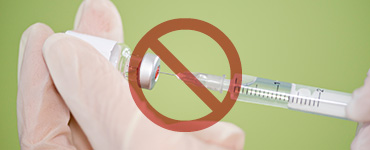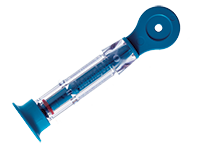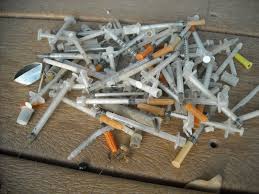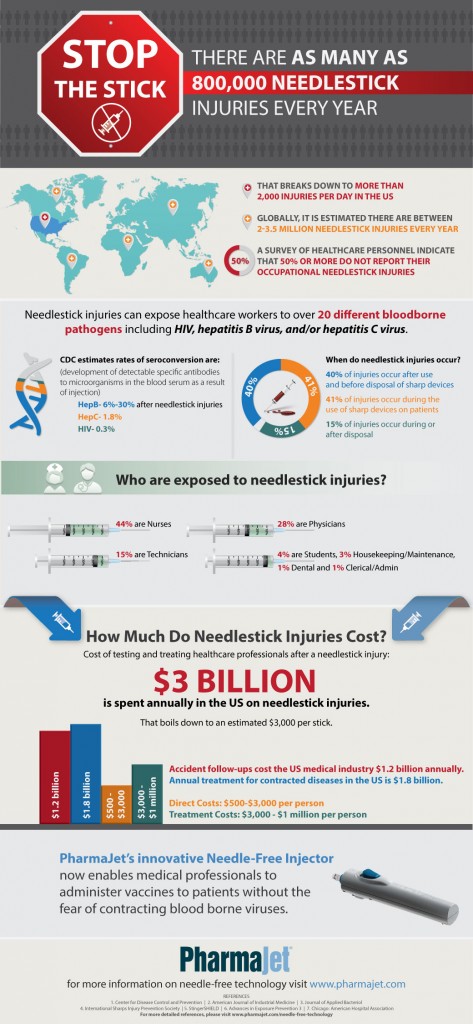PharmaJet:
It is rare to find an individual who actually enjoys getting his or her annual flu shot, but there is a significant segment of the population whose phobia of injections is so severe it prevents them from seeking medical care altogether.
Jet injectors use a unique pressure profile to deliver vaccine as a fine stream of fluid to puncture the skin, and deliver vaccine to the proper tissue depth for intramuscular injection.
As pharmaceutical technology has evolved to offer alternative delivery methods, the needle phobic are now able to receive certain treatments in less invasive ways. The increased awareness of the fear from patients has inspired companies like PharmaJet to manufacture needle-free injections. Hopefully these advances will enable these individuals to seek the much-needed medical treatment everyone should be able to freely access.
Trypanophobia:
Trypanophobia, fear of needles, also known as needle phobia, is the extreme fear of medical procedures involving injections or hypodermic needles. It is a Diagnostic and Statistical Manual of Mental Disorders recognized phobia affecting approximately 50 million Americans, making it a top-ten American fear.
1 People who suffer from this at times debilitating condition can experience symptoms including hypertension, rapid heart rate or heart palpitations and even fainting or loss of consciousness.
2 These physical manifestations of the phobia can also trigger feelings of anxiety and hostility toward the medical community as a whole.
Not only are the symptoms themselves harmful to the individual’s health, but the fear associated with doctors, nurses and other medical professionals can and often does prevent people from seeking treatment for any number of serious ailments. Of those suffering from needle phobia, it has been reported that at least 20 percent avoid any medical treatment as a result. In fact, in a 2012 survey conducted by Target and Harris Interactive, out of the 60 percent of American adults who choose not to receive a flu vaccination, 23 percent stated the reason is a fear of needles.
According to the Centers for Disease Control and Prevention, each year as much as 20% of Americans fall victim to influenza and flu-related complications, resulting in approximately 200,000 hospitalizations and 36,000 deaths. However, even in the face of such overwhelming statistics, sufferers of needle phobia will abstain from the flu vaccination.
Some cases of injection phobia are so extreme that even when directly faced with the prospect of death, certain phobics will continue to avoid treatment. This has led to thousands of unnecessary deaths – a statistic rarely associated with a phobia.
Another reason why the trypanophobic is mistrusting of medical professionals is that the condition has long been dismissed by doctors — patients are encouraged to “just get over it.” For years, the fear of needles was considered simply an emotional response to a childhood fear rather than a serious illness.In actuality, the condition can be due to a variety of factors including genetic inheritance. Fear of sharp objects and puncture wounds could have easily developed as a survival instinct prior to the emergence of modern medicine.
Regardless of the origin or cause, needle phobia clearly presents a problem for both the medical profession and lay population. Doctors often fail to acknowledge the gravity of the condition, which further alienates those suffering from the phobia.
As pharmaceutical technology has evolved to offer alternative delivery methods, the needle phobic are now able to receive certain treatments in less invasive ways. The increased awareness of the fear from patients has inspired companies like PharmaJet to manufacture needle-free injections. Hopefully these advances will enable these individuals to seek the much-needed medical treatment everyone should be able to freely access.
Why is Needle-Free Important?
1)According to OSHA, there are between 600,000-800,000 needle stick injuries every year in the U.S. alone.
2)Needle stick injuries can expose healthcare workers to up to 20 different blood borne pathogens including HIV and hepatitis B and/or C.
3)Each needle stick injury costs approximately $3,000 for lab fees, labor, post-exposure follow-ups, etc.
4)Eliminate needle = reduce these problems and improve the patient experience.
Expand Immunization Coverage:
Jet injectors can expand influenza immunization coverage by attracting those that normally forego flu shots due to fear/anxiety of needles
Eliminate Risks of Needles
1)No needle stick injuries
2)No needle reuse
3)No cross-contamination or spread of infectious disease
4)Reduce Health Care Costs
No need for sharps management and disposal costs
Eliminate costs for needle stick injury testing and treatment
Protect Patient and Practitioner; Better Patient Experience
Safe, auto-disabling, needle-free syringe.
Product Overview:
0.5 mL Stratis® Needle-Free Injector for Intramuscular (IM) and Subcutaneous (SC) Delivery
- Delivers an inject able liquid medication/vaccine by means of a narrow, high-velocity fluid jet injection, which penetrates the skin in about 1/10 of a second
- Spring-operated, requiring no external power source
- Sterile, single-use, auto-disabling syringe
- Enhanced design features such as convenient one-hand jet syringe attachment; enhanced visibility, a smooth easy trigger force and no touch syringe ejection.
Components:
Reusable hardware:
- Injector
- Reset Station
Simple, Robust Design Injector Unique features:
- Durable
- Double safety feature
- Tested for 20,000 cycles
Cost :
- No external power source needed
- Minimal syringe dead-space = reduced waste of vaccines
- Accurate and consistent injections
- Reduced cost per injection
- No sharps disposal necessary = Reduces cost and waste of sharps
- Delivers medicines/vaccines to the desired tissue depth – intramuscular (IM) and subcutaneous (SC) tissue.






